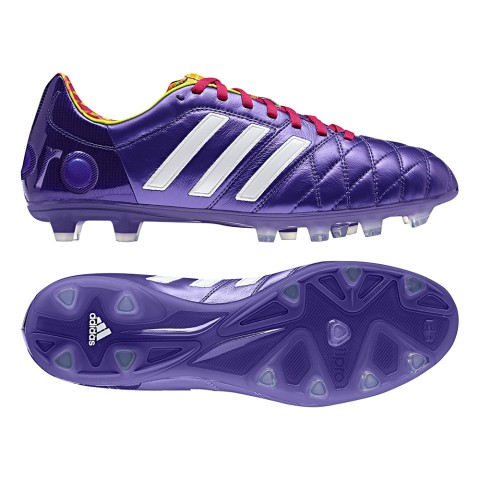A pair of soccer shoes from Adidas
Are you planning to buy a new pair of soccer shoes but you’re still not sure on what specific features you should look for? This comprehensive guide will surely help you decide on which soccer cleats are the most appropriate for the structure of your feet. Whether you are a young or an old player, a new enthusiast or a seasoned player, these 5 steps to choosing the best soccer shoes for your foot will hopefully help you narrow down your choices to a pair or two.
1. Know your foot type
The first step is to determine the type of your foot based on the structure of the arch of your feet. The easiest way to determine your foot structure is to wet your sole and step on the floor or a piece of paper.
A high arch type is characterized by a raised arch that barely touches the ground. People with this foot type are more prone to supination or the rolling of the foot towards the outside. Choose soccer cleats with cushioning support for high arch foot types.
Most soccer players have a normal arch type and neutral alignment. Soccer cleats with increased stability are recommended for people with normal arch type.
A flat foot condition is characterized by a low arch that entirely touches the ground. People who are flat footed are more vulnerable to pronation or rolling over of the feet towards the inside or the medial line. Motion control soccer shoes effectively reduce problems associated with flat foot condition.
2. Choose the right size of soccer shoes
This step is self-explanatory; avoid using soccer shoes that are too small or too big for your feet. Take note that different manufacturers use different standards for shoe sizes. A thumb-width space between the toes and the top of the shoes signifies that the size is too big for you. If you feel the upper of the shoes pressing against your toes, then they are too small.
3. Consider the width too
Aside from measuring the length of the foot, people must also take note of their foot’s width. Most of the time, people with narrow feet don’t encounter any issues with finding the right shoes. Wearing soccer cleats one size down the original shoe size often solves the problem for narrow feet. The problem is more complicated for people with wide feet as they can be wide at the balls, at the mid-section, or at the heels. It is, therefore, important to always check the fit of the shoes before going into play.
4. Select the material
Natural leather soccer cleats are currently the best option because of the enhanced flexibility and extreme durability. Synthetic leather comes second to natural leather in terms of quality but their waterproofing ability makes them a contender for the top spot too. Mesh fabric improves air circulation around the feet eliminating excess heat and sweat. Other synthetic materials do not offer much flexibility and may cause some issues for people with wide feet.
5. Choose between molded and detachable cleats
Molded cleats with fixed soles are generally cheaper and easier to maintain. On the other hand, detachable cleats are more versatile and cost-effective in the long run. If you usually play on different playing surfaces, then detachable cleats should be a perfect choice. Especially if you have a special foot structure, you won’t need to buy different shoes anymore. All you have to do is replace the sole depending on the playing grounds and you’re good to go.
All media inquiries can be sent to CRobinson@hustleboss.com

